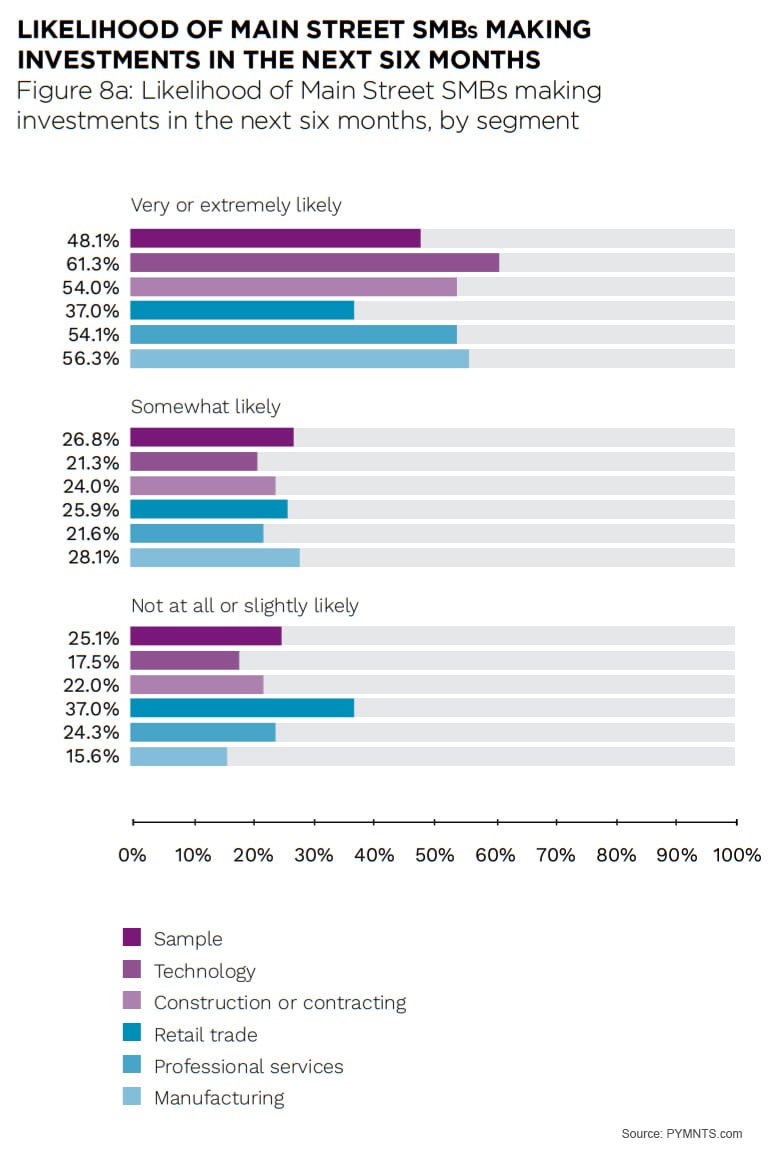America’s small- and medium-sized businesses, particularly the mom-and-pop shops lining main streets and town centers, have shouldered through a very challenging 15 months of COVID-era lockdowns and restrictions that, at long last, appear to be coming to an end.
Vaccines have rolled out fully to more than 40 percent of the U.S. population, while 50 percent report having one or more doses. As PYMNTS latest study, After Vaccines: What Mass Vaccinations Mean for Main Street Merchants demonstrates, the world is slowly embracing a return to normalcy.
Small businesses are eagerly awaiting an opportunity to greet customers as they return. It seems they already have returned for some places, as data suggests one in four Main Street SMB owners report their communities’ economic environments have returned to pre-pandemic levels. They predict their business will be back to normal before Halloween.
Well, back to the new normal any way, as innovation seems to be the order of the day. As 88 percent of Main Street SMB owners have reported implementing some innovation during the pandemic, with favored areas of innovation all being fairly unsurprising, given the circumstances. Adding a touchless experience was adopted by 70 percent of SMB merchants, with larger product offerings also favored by a majority (56 percent). Nearly half reported turning to digital transaction support (47 percent).
While innovation was a looked-to solution across the segment, as has been the trend throughout the pandemic, larger small firms with better access to resources and more controlled cash flow have enjoyed more advantages with their greater ability to pivot and invest in digital innovation. According to the latest study, 94 percent of SMBs with annual revenues of $500,000 to $1 million have implemented innovation strategies compared to 82 percent for those with revenues of less than $500,000.
 However, SMBs across the board are also going into recovery ready to invest more heavily in their businesses, with more than half (61 percent) of Main Street SMBs reporting strong intentions to do so and only 25 percent reporting they are unlikely to do so. New employees, additional equipment and advertising lead areas of interest for investment.
However, SMBs across the board are also going into recovery ready to invest more heavily in their businesses, with more than half (61 percent) of Main Street SMBs reporting strong intentions to do so and only 25 percent reporting they are unlikely to do so. New employees, additional equipment and advertising lead areas of interest for investment.
That willingness to invest is, in turn, explained by the general optimism reflected in entrepreneurs’ answers about their expectations for the future. Among those that expanded in the year 2020, 25 percent believe that trend will continue, according to PYMNTS data. Revenue growth is also fairly widely forecast for 2021, with the professional services and retail segments being the most bullish on what comes next this year. While some 45 percent of Main Street SMBs overall expect revenues to increase this year, professional services providers are more optimistic, with predictions of 62 percent and 61 percent forecasting revenue growth respectively.
Optimism for revenue growth is highest among those generally optimistic about the vaccine and the pandemic’s forthcoming ending, with 60 percent of Main Street SMBs telling PYMNTS that vaccination will be “very” or “extremely” successful in boosting growth this year.
And enthusiasm in the SMB community, as it travels the road to recovery, is not unique to PYMTS data. A mid-April report from Goldman Sachs found that 90 percent of small businesses now expect their shops will survive the pandemic, a big pick up from the 68 percent forecasting optimistically about their future in the same study last year. Recent Axios reporting indicates firms that have buoyant outlooks have three things in common: government support via the PPP loans, an embrace of technology and an incredibly gritty, no self-pity mindset in the SMB community.
Various data sources indicate that things in the SMB community are on the upswing — but there are a few notable caveats to that trend worth watching going forward as the recovery period rolls on.
SMBs are far from monolithic entities in the U.S. and what business one is in and where it plies its trade tend to be hugely important factors. According to PYMNTs data, attitudes toward vaccinations vary by location widely: 78 percent of metropolitan Main Street SMBs expect vaccination efforts to successfully control the virus’s spread. In comparison, only 41 percent of their rural counterparts expect the same. Rural SMB owners are also less likely to get a vaccine — with only 13 percent of this group saying they will get vaccinated in the next three months compared to 56 percent of Main Street SMB owners in metropolitan areas.
SMBs are increasingly walking the road to recovery — and feeling good about themselves to be doing it, the data shows. But that feeling is far from evenly distributed, and where one is and what they’re doing seem to have a deciding factor in how far an SMB feels it has come.

 However, SMBs across the board are also going into recovery ready to invest more heavily in their businesses, with more than half (61 percent) of Main Street SMBs reporting strong intentions to do so and only 25 percent reporting they are unlikely to do so. New employees, additional equipment and advertising lead areas of interest for investment.
However, SMBs across the board are also going into recovery ready to invest more heavily in their businesses, with more than half (61 percent) of Main Street SMBs reporting strong intentions to do so and only 25 percent reporting they are unlikely to do so. New employees, additional equipment and advertising lead areas of interest for investment.


